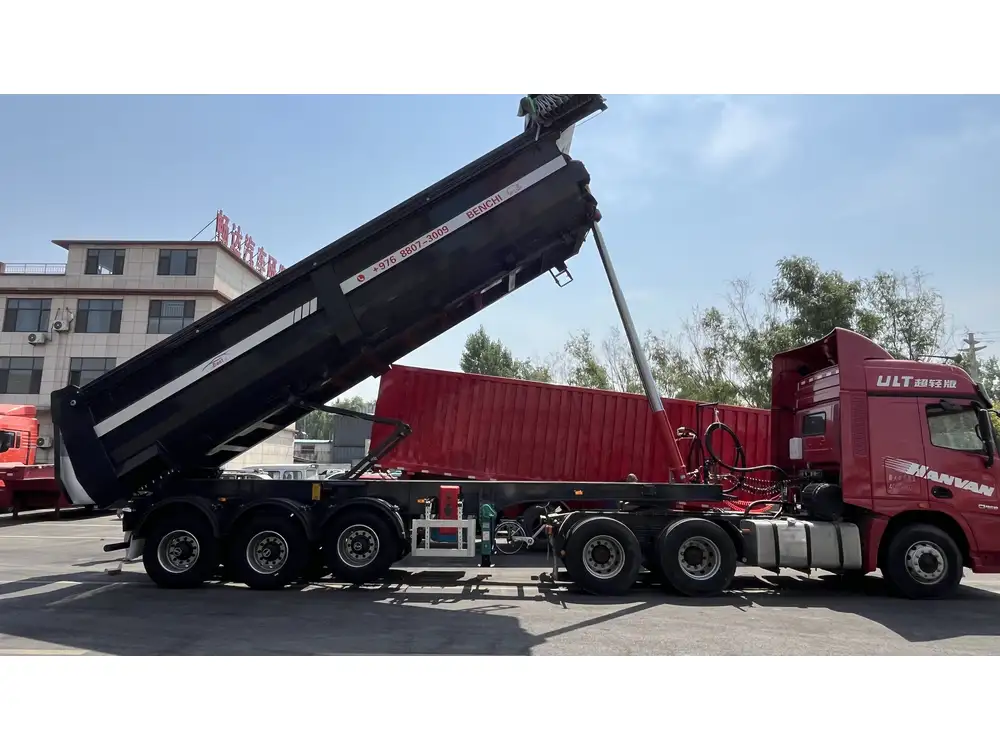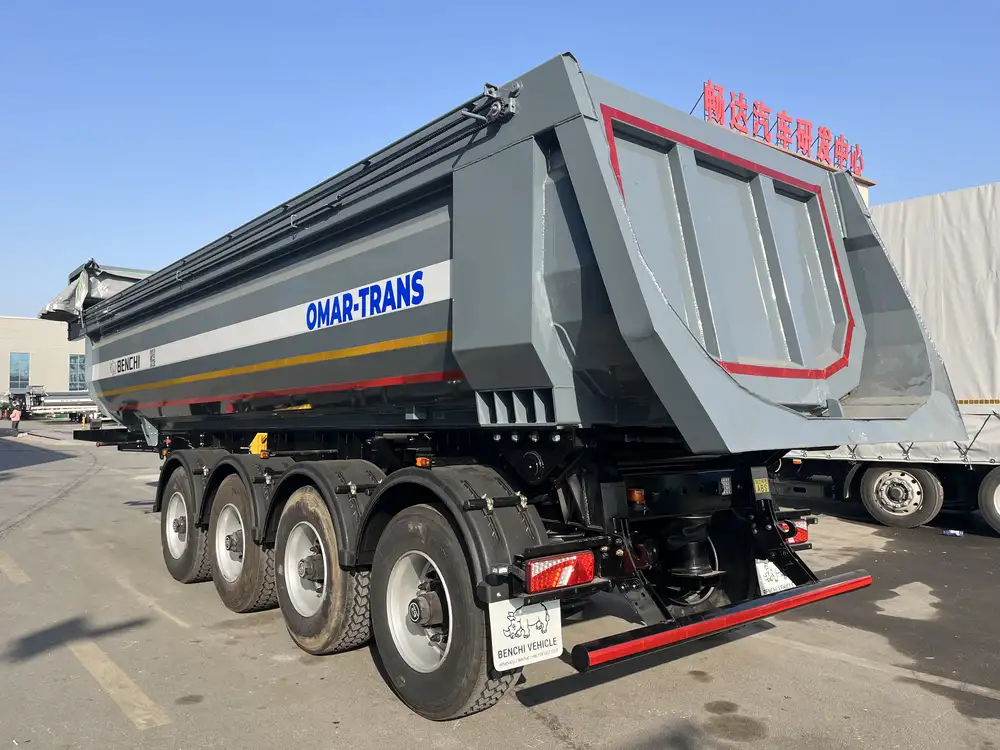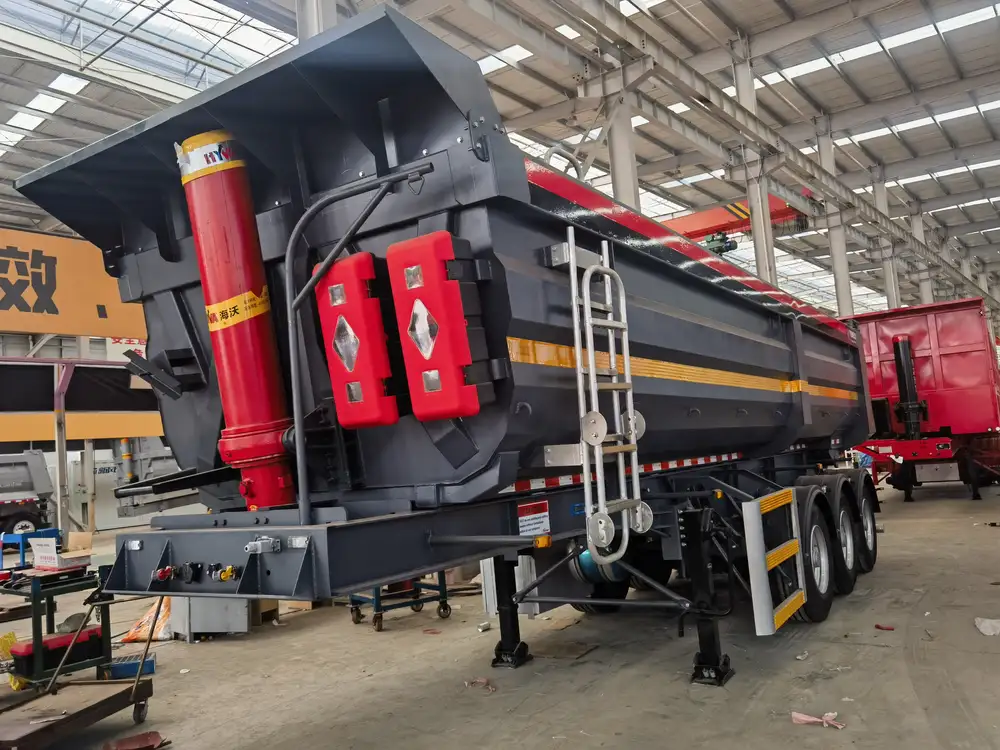In the logistics and transportation industry, flatbed trailers serve a critical role in hauling various types of cargo. When dealing with flatbed trailers, one of the most crucial considerations is dock height. Knowing what flatbed trailer dock height entails can significantly impact loading efficiency, safety, and overall operations. This article delves deeply into the factors surrounding flatbed trailer dock height, aiming to equip you with the information needed to optimize your loading processes.
What is Dock Height?
Dock height refers to the vertical distance from the finished floor height of a loading dock to the ground. It is a critical measurement since it directly influences how containers, goods, and equipment are loaded and unloaded. Understanding dock height is essential for ensuring proper alignment between the dock and the trailer, which can prevent accidents and cargo damage.
Standard Dock Heights
Most commercial loading docks adhere to standard heights for operational efficiency. The following table summarizes common dock heights:
| Dock Type | Height (inches) | Height (feet) |
|---|---|---|
| Standard Loading Dock | 48 | 4 |
| High Dock | 54 | 4.5 |
| Low Dock | 36 | 3 |
These standard heights facilitate efficient loading operations with various trailer types, including flatbed trailers.

Flatbed Trailer Dock Height Considerations
1. Trailer Heights and Compatibility
Every flatbed trailer has its own height when loaded and unloaded. Therefore, understanding the height variations is pivotal for ensuring compatibility with docks. Standard flatbed trailers typically have a height ranging from 48 to 54 inches. This height can vary, mostly depending on whether the trailer is loaded with equipment or other cargo.
Loading and Unloading Dynamics
Loading and unloading dynamics depend on the cargo’s weight, dimensions, and distribution. Here are critical considerations:
Unloading Techniques:
- Forklift Use: Ensure the forklift’s fork length and load capacity are compatible with the trailer height.
- Ramp Options: Incorporate ramps that accommodate varied trailer heights for smooth transitions.
Loading Strategies:
- Gravity and Incline: Consider how the height differential between the flatbed and dock influences the loading process, thereby avoiding accidents.

2. Regional Regulations and Standards
Adhering to regional regulations is non-negotiable. Various regions may have unique standards governing dock heights and trailer compatibilities:
| Country/Region | Regulation Authority | Relevant Standards |
|---|---|---|
| United States | OSHA | Minimum safe working height for loading docks |
| Europe | EU Regulations | Guidelines for transport and freight |
Be sure to stay informed about local regulations to avoid penalties or operational issues.
3. Traffic Flow and Dock Design
Efficiency in traffic flow around a loading dock is critical. When designing docks, consider:
Space Between Trailers:
- Too narrow of a space may lead to accidents or damage.
Clearance Height:
- Ensure adequate vertical clearance for equipment and vehicles.
4. Safety Protocols
Safety is paramount in loading operations at flatbed trailers. Some safety measures include:
- Proper Training: Ensure all employees understand dock height protocols and safety measures.
- Regular Inspections: Conduct frequent inspections of the dock area to identify any hazards.
- Signage: Clearly mark dock heights and loading restrictions.

Best Practices for Flatbed Trailer Operations
To maximize loading efficiency and safety at flatbed trailer docks, consider implementing the following best practices:
Optimal Equipment Choices
Selecting the right equipment for your operations can significantly influence efficiency. The equipment can include:
- Dock Levelers: Use adjustable dock levelers to accommodate varying trailer heights.
- Loading Ramps: Deploy loading ramps that provide seamless transitions for forklifts and personnel.
Training Programs
Invest in comprehensive training programs for your staff. Key areas for training include:
- Understanding Dock Heights: Provide training on understanding and measuring dock height.
- Safe Loading Protocols: Reinforce safe loading practices, such as using chocks and securing loads.

Load Management
Efficient load management plays a pivotal role in ensuring smooth operations. Conduct regular audits of load capacities and distribution. Here’s a checklist for effective load management:
- Assess vehicle weight limits.
- Verify weight distribution before loading.
- Assign designated loading zones to minimize congestion.
Utilizing Technology
Incorporating technology can enhance operational efficiency. Consider systems such as:
- Dock Management Software: Utilize software that tracks and manages loading dock activity.
- Weight Sensors: Use weight sensors to monitor the load directly for optimal safety.
Capacity Planning for Flatbed Trailers

Estimating Load Capacity
Calculating the load capacity of flatbed trailers is essential for determining how many items can be moved in a single trip. Factors influencing load capacity include:
- Trailer Size: The dimensions of the flatbed impact capacity.
- Cargo Type: Different types of cargo impose varying weights.
Safety Reserves
Always maintain safety reserves in load calculations. Following guidelines such as the 80% rule can help:
- Example of Safe Loading: If the trailer is rated for 10,000 lbs, do not load more than 8,000 lbs for safety.
Inventory Management Around Flatbed Trailer Operations

Efficient Inventory Rotation
Implementing an efficient inventory rotation system can significantly reduce waste and improve loading times. Consider the following strategies:
- First-in First-out (FIFO): Always load the oldest inventory first to mitigate spoilage.
- Zoning: Define areas corresponding to inventory type for quick accessibility.
Monitoring Inventory Levels
Use inventory management systems to keep track of stock levels in real time. This can help in coordinating with loading operations accurately.
Conclusion
Understanding flatbed trailer dock heights is critical for managing logistics in a safe and efficient manner. By adhering to standard practices, monitoring regulations, and implementing best practices in training and technology, businesses can enhance their operations and reduce risks associated with loading and unloading processes.
Investing the time and resources to fully understand and optimize dock heights and operations will not only save valuable time and money but will also contribute to creating a safer and more effective working environment.
Whether you’re a seasoned operator or new to the logistics field, keeping abreast of the latest information about flatbed trailer dock height can offer significant operational advantages. Take the lessons learned herein to reinforce your operational frameworks and achieve greater success in your logistics endeavors.



